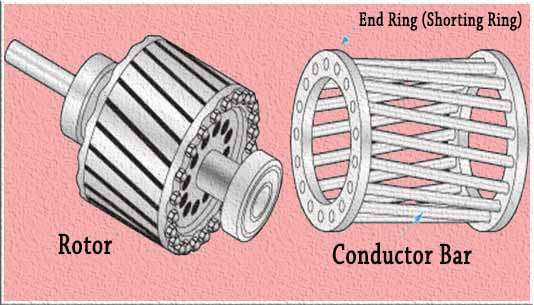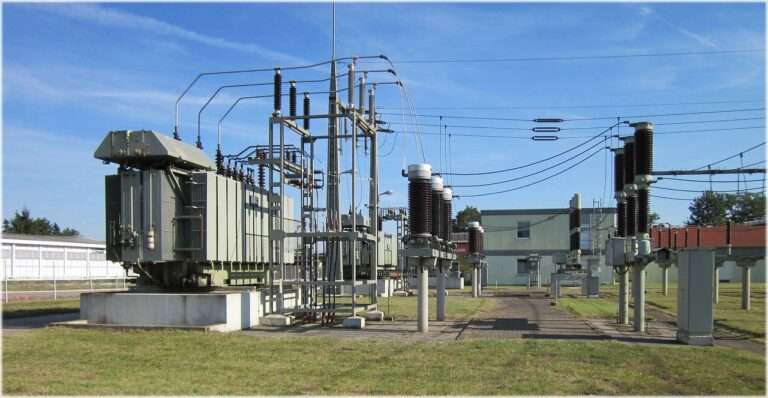Infrared Sensors: Unveiling the Power of Invisible Light
In the dynamic field of sensing technologies, Infrared Sensors emerge as unsung heroes, utilizing the potential of invisible light for detection and measurement. This exploration delves into the nuanced world of Infrared Sensors, shedding light on their diverse types, practical applications, and a balanced evaluation of the pros and cons that make this technology so captivating.

Working of Infrared Sensors
Infrared sensors operate based on the detection and interpretation of infrared radiation. These sensors utilize the unique properties of infrared light, which is not visible to the human eye but can be sensed and measured by electronic devices.
The working principle of infrared sensors varies slightly depending on the type of sensor, but here’s a general overview:
1. Emitter and Receiver:
Infrared sensors typically consist of two main components: an emitter and a receiver. The emitter emits infrared radiation, and the receiver detects the reflected or emitted radiation.
2. Reflection or Emission:
In certain applications, such as proximity sensors or object detection, the infrared sensor emits infrared light and waits for it to be reflected by an object. The receiver then detects the reflected light, and the sensor interprets this as the presence of an object.
In other cases, like in infrared thermometers, the sensor measures the infrared radiation emitted by an object to determine its temperature.
3. Passive Infrared (PIR) Sensors:
PIR sensors work on a different principle. They detect changes in the infrared radiation in their field of view caused by the movement of objects or living beings. When an object with a different temperature moves within the sensor’s range, it triggers a response.

4. Capacitive or Resistive Changes:
Some infrared sensors, like those used in touchscreens, detect changes in capacitance or resistance when there is a touch. Capacitive touchscreens rely on the change in capacitance caused by the touch, while resistive touchscreens measure the change in resistance.
5. Digital Output:
In many applications, the infrared sensor provides a digital output. For instance, it might send a high or low signal to the connected microcontroller or device, indicating the presence or absence of an object, touch, or movement.
6. Analog Output (Optional):
Some infrared sensors provide analog output, producing a continuous range of values. This is common in infrared temperature sensors or gas sensors where the intensity of the infrared radiation is proportional to the measured parameter.
7. Calibration (Optional):
Depending on the application, some infrared sensors may require calibration to ensure accurate readings. This calibration process often involves adjusting sensitivity or compensating for environmental factors.

Understanding the working principles of infrared sensors allows developers and engineers to apply them effectively in various applications, from motion detection and object tracking to temperature measurement and touch-sensitive interfaces.
Types of Infrared Sensors:
Infrared sensors are devices that detect and measure infrared radiation. They are widely used in various applications, ranging from proximity sensing to temperature measurement. Here are some common types of infrared sensors:
Passive Infrared (PIR) Sensors:
PIR sensors detect changes in infrared radiation levels in their field of view. They are commonly used in motion detectors for security systems, lighting control, and automatic doors.
Thermal Infrared Sensors (IR Thermometers):
These sensors measure the infrared radiation emitted by an object to determine its temperature. They are used in applications such as industrial temperature monitoring, medical thermography, and HVAC systems.
Active Infrared Sensors:
Active infrared sensors emit infrared radiation and then detect the reflection or interruption of the emitted signal. They are used in applications like proximity sensors, object detection, and beam-break detection systems.
Infrared Photodiodes:
These sensors convert incoming infrared radiation into an electrical current. They are commonly used in remote controls for electronic devices, optical communication systems, and light barriers.
Infrared Phototransistors:
Similar to infrared photodiodes, these sensors convert incoming infrared radiation into an electrical signal. However, phototransistors provide a higher sensitivity and can be used in various applications, including line-following robots and object detection.
Infrared Arrays:
Infrared sensor arrays consist of multiple individual infrared sensors arranged in a grid. These are used for thermal imaging cameras and other applications requiring spatially distributed temperature measurements.
Infrared Gas Sensors:
These sensors detect the presence and concentration of gases based on their infrared absorption characteristics. They are used in gas detection systems for industrial safety and environmental monitoring.
Infrared Imaging Sensors (Infrared Cameras):
Infrared cameras capture and visualize infrared radiation, allowing for the creation of thermal images. They find applications in night vision, security surveillance, and industrial inspections.
Infrared Proximity Sensors:
These sensors detect the presence or proximity of an object by measuring the reflection of infrared light. They are commonly used in mobile devices for touchscreen proximity detection.

Infrared Reflective Sensors:
These sensors consist of an infrared emitter and receiver placed in close proximity. They detect the presence of an object by measuring the amount of reflected infrared light. They are used in applications like line-following robots and object detection.
These types of infrared sensors cater to a wide range of applications, from simple object detection to complex thermal imaging. The choice of sensor depends on the specific requirements of the application in terms of range, sensitivity, and environmental conditions.
Applications of Infrared Sensors:
Security Systems: Infrared sensors, especially PIR sensors, play a crucial role in security systems by detecting motion and triggering alarms. They are widely used in homes, offices, and industrial facilities.
Automotive: Infrared sensors are employed in automotive applications for night vision systems, object detection, and collision avoidance, enhancing driver safety and reducing accidents.
Healthcare: Infrared temperature sensors are extensively used in healthcare for non-contact temperature measurement, making them valuable tools in fever screening and patient monitoring.
Consumer Electronics: Infrared sensors are found in various consumer electronics, such as remote controls for TVs and air conditioners, enabling wireless communication between devices.
Advantages of Infrared Sensors:
Non-Contact Sensing: Infrared sensors operate without physical contact, making them suitable for applications where contact is impractical or undesirable.
Night Vision Capability: Infrared sensors can function in low-light or complete darkness, providing valuable night vision capabilities in security and automotive applications.
Energy Efficiency: PIR sensors are energy-efficient, as they only activate when detecting motion, making them ideal for lighting control and automation.
Disadvantages of Infrared Sensors:
Limited Range: Some infrared sensors, particularly PIR sensors, have limited range and may not be suitable for long-distance detection.
Susceptibility to Environmental Factors: Environmental conditions such as extreme temperatures or humidity can affect the performance of infrared sensors.
Interference Issues: Infrared sensors may experience interference from other sources of infrared radiation, potentially leading to false alarms or inaccuracies.
infrared sensors Arduino
Using infrared (IR) sensors with Arduino is a popular choice for hobbyists and developers to create various projects involving object detection, distance measurement, and even remote control applications. Below, I’ll provide a brief overview of connecting and using infrared sensors with Arduino.
Components Needed:
- Infrared Sensor
- Commonly used ones include IR proximity sensors, IR reflective sensors, or IR receivers.
Arduino Board:
- Such as Arduino Uno, Arduino Nano, etc.
- Jumper Wires
- For connecting components.
Steps to Connect and Use Infrared Sensors with Arduino
- Connect the Infrared Sensor:
- Connect the power (VCC) and ground (GND) pins of the infrared sensor to the corresponding pins on the Arduino.
- Connect the signal (OUT) pin of the sensor to a digital input pin on the Arduino.
Upload the Arduino Code
Write or upload a code to read the sensor values from the digital pin. For example, if you’re using an IR proximity sensor, the code might look something like this:
const int irSensorPin = 2; // Use the appropriate digital pin
int sensorValue;
void setup() {
Serial.begin(9600);
}
void loop() {
sensorValue = digitalRead(irSensorPin);
Serial.println(sensorValue);
delay(500); // Adjust as needed
}View Sensor Readings:
- Open the Serial Monitor in the Arduino IDE to view the sensor readings. It will display either 0 or 1 based on whether the sensor detects an object or not.
Calibrate and Adjust:
Depending on your application, you may need to calibrate the sensor or adjust its sensitivity. This is typically done by turning a potentiometer on the sensor module.
Example Applications:
Infrared Remote Control:
Use an IR receiver to decode signals from a remote control and perform actions on the Arduino.
Object Detection:
Place an IR proximity sensor to detect the presence of an object within a certain range.
Line Following Robot:
Use IR reflective sensors to detect lines and guide a robot along a predefined path.
Distance Measurement:
Combine an IR distance sensor to measure the distance between the sensor and an object.
Libraries:
Some sensors may require specific libraries for additional functionality. For example, if you’re working with IR remotes, you might use the “IRremote” library.
Remember to check the datasheet of your specific IR sensor for pin configurations and details. The code provided above is a basic example; actual implementations may vary based on the sensor’s specifications and your project requirements.
Conclusion
Infrared sensors, with their ability to perceive the invisible, have become integral components in a myriad of applications. From enhancing security to enabling night vision, the versatility of infrared sensors continues to shape the landscape of sensing technology.
While they offer numerous advantages, understanding their limitations is crucial for deploying them effectively in diverse environments. As technology evolves, so too will the capabilities and applications of these remarkable sensors, ensuring they remain indispensable in various industries.
1. What is an infrared sensor?
An infrared sensor is a device that detects and measures infrared radiation, which is not visible to the human eye. It is commonly used for various applications such as proximity sensing, object detection, temperature measurement, and communication.
2. How do infrared sensors work?
Infrared sensors work by either emitting and measuring infrared radiation reflected by objects or by detecting changes in the ambient infrared radiation. The emitted or reflected signals are then translated into electrical signals for interpretation.
3. What are the types of infrared sensors?
There are various types of infrared sensors, including passive infrared (PIR) sensors for motion detection, infrared temperature sensors for measuring temperature, infrared proximity sensors for object detection, and infrared receivers for remote controls.
4. Where are infrared sensors commonly used?
These sensors find widespread use in applications such as security systems (PIR sensors), temperature measurement (infrared thermometers), proximity sensing (touchless switches), communication (infrared remotes), and industrial automation.
5. Can infrared sensors work in complete darkness?
Yes, many infrared sensors can operate in complete darkness because they do not rely on visible light. They detect infrared radiation, which is present regardless of ambient light conditions.
6. What is the difference between active and passive infrared sensors?
Active infrared sensors emit their own infrared radiation and detect the reflection, while passive infrared sensors only detect changes in the existing infrared radiation in their field of view, such as those caused by movement.
7. Are infrared sensors affected by environmental conditions?
Environmental conditions like temperature and humidity can influence the performance of these sensors. Calibration and adjustment may be necessary to account for such factors and ensure accurate readings.
8. Can infrared sensors measure the temperature of an object?
Yes, infrared temperature sensors can measure the temperature of an object by detecting the infrared radiation it emits. These sensors are commonly used in medical thermometers, industrial processes, and HVAC systems.
9. How can I increase the range of an infrared sensor?
The range of an infrared sensor can be increased by using a more powerful emitter, optimizing the optics, and ensuring a clear line of sight between the sensor and the target.
10. Are there safety considerations when using infrared sensors?
In general, infrared sensors are safe for use. However, when using high-powered infrared sources, such as in industrial applications, it’s essential to follow safety guidelines to prevent any potential harm to human eyes and skin.
Worth Read Posts
Follow us on LinkedIn”Electrical Insights” to get the latest updates in Electrical Engineering. You can also Follow us on LinkedIn and Facebook to see our latest posts on Electrical Engineering Topics.





